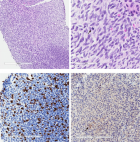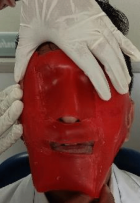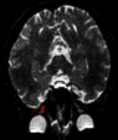Abstract
Short Perspective
Bees, Butterflies, and Beyond the Diverse Pollinators, an Essence for the Reproductive Success of Flowering Plants
Ammir Hassan*, Shamiya Hassan and Mohd Abdul Nasir
Published: 04 June, 2024 | Volume 8 - Issue 2 | Pages: 065-073
Pollinators are very critical when it comes to the reproductive success of plants. They promote outbreeding which holds immense significance in the era of global climate change. It allows the plants to become fertilized, to produce seeds, fruits, and eventually new plants. They are instrumental in the sustainability of our ecosystem. Thus, there is an essential need to study these pollinators to understand how, during the course of evolution, they have co-evolved with the flowering plants to shape floral architecture and community dynamics thriving in the vicinity. In this mini-view, we shall focus our discussion on some of the animal pollinators, the dwindling diversity of animal pollinators, and various associated pollination syndromes.
Read Full Article HTML DOI: 10.29328/journal.jpsp.1001135 Cite this Article Read Full Article PDF
Keywords:
Pollination; Pollinator; Syndrome; Honey bee; Climate change; Food security
References
- Aoun M. Pesticides’ Impact on Pollinators. 2020. 10.1007/978-3-319-69626-3_38-1.
- Ollerton J. Pollinator Diversity: Distribution, Ecological Function, and Conservation. Annual Review of Ecology, Evolution, and Systematics. 2017; 48. 10.1146/annurev-ecolsys-110316-022919.
- Fægri K, Van der L. The Principles of Pollination Ecology, Oxford: Pergamon. 1979; 244: 3rd ed.
- Fenster CB, Armbruster WS, Wilson P, Dudash MR, Thomson JD. Pollination syndromes and floral specialization. Annu Rev Ecol Evol Syst. 2004; 35:375-403.
- Proctor M, Yeo P, Lack A. The natural history of pollination. Portland: Timber Press; 1996.
- Guarino B. “Like it’s been nuked”: millions of bees’ dead after South Carolina sprays for Zika mosquitoes. Washington Post. 2016.
- Gomez JM, Zamora R. Generalization vs specialization in the pollination system of Hormathophylla spinosa (Cruciferae). Ecology. 1999; 80:796-805.
- Anderson S. The relative importance of birds and insects as pollinators of the New Zealand flora. N Z J Ecol. 2003; 27:83-94.
- Cronk Q, Ojeda I. Bird-pollinated flowers in an evolutionary and molecular context. J Exp Bot. 2008; 59(4):715-27. doi: 10.1093/jxb/ern009. Epub 2008 Mar 7. PMID: 18326865.
- Fleming TH, Geiselman C, Kress WJ. The evolution of bat pollination: a phylogenetic perspective. Ann Bot. 2009 Nov; 104(6):1017-43. doi: 10.1093/aob/mcp197. Epub 2009 Sep 29. PMID: 19789175; PMCID: PMC2766192.
- Morales CL, Arbetman MP, Cameron SA, Aizen MA. Rapid ecological replacement of a native bumble bee by invasive species. Front Ecol Environ. 2013; 11:529–34.
- Williams P, Tang Y, Yao J, Cameron S. The bumblebees of Sichuan (Hymenoptera: Apidae, Bombini). Syst Biodivers. 2009; 7:101–89.
- Pauw A, Stanway R. Unrivalled specialization in a pollination network from South Africa reveals that specialization increases with latitude only in the Southern Hemisphere. J Biogeogr. 2015; 42:652–61.
- Biesmeijer JC, Roberts SP, Reemer M, Ohlemüller R, Edwards M, Peeters T, Schaffers AP, Potts SG, Kleukers R, Thomas CD, Settele J, Kunin WE. Parallel declines in pollinators and insect-pollinated plants in Britain and the Netherlands. Science. 2006 Jul 21; 313(5785):351-4. doi: 10.1126/science.1127863. PMID: 16857940.
- Ollerton J, Erenler H, Edwards M, Crockett R. Pollinator declines. Extinctions of aculeate pollinators in Britain and the role of large-scale agricultural changes. Science. 2014 Dec 12; 346(6215):1360-2. doi: 10.1126/science.1257259. PMID: 25504719.
- Burkle LA, Marlin JC, Knight TM. Plant-pollinator interactions over 120 years: loss of species, co-occurrence, and function. Science. 2013 Mar 29; 339(6127):1611-5. doi: 10.1126/science.1232728. Epub 2013 Feb 28. PMID: 23449999.
- Evans AN, Llanos JE, Kunin WE, Evison SE. Indirect effects of agricultural pesticide use on parasite prevalence in wild pollinators. Agric Ecosyst Environ. 2018; 258:40–48. https://doi.org/10.1016/j.agee.2018.02.002.
- Potts SG, Biesmeijer JC, Kremen C, Neumann P, Schweiger O, Kunin WE. Global pollinator declines: trends, impacts and drivers. Trends Ecol Evol. 2010 Jun; 25(6):345-53. doi: 10.1016/j.tree.2010.01.007. Epub 2010 Feb 24. PMID: 20188434.
- Zhang Y, Zeng D, Li L, Hong X, Li-Byarlay H, Luo S. Assessing the toxicological interaction effects of imidacloprid, thiamethoxam, and chlorpyrifos on Bombus terrestris based on the combination index. Sci Rep. 2022 Apr 15; 12(1):6301. doi: 10.1038/s41598-022-09808-3. PMID: 35428747; PMCID: PMC9012744.
- Rigosi E, Tison L, Haase A. Editorial: Effects of pesticides on the brain of pollinating insects. Front Insect Sci. 2022 Dec 22; 2:1113610. doi: 10.3389/finsc.2022.1113610. PMID: 38468754; PMCID: PMC10926396.
- Kuan AC, DeGrandi-Hoffman G, Curry RJ, Garber KV, Kanarek AR, Snyder MN, Wolfe KL, Purucker ST. Sensitivity analyses for simulating pesticide impacts on honey bee colonies. Ecol Modell. 2018 May 24; 376:15-27. doi: 10.1016/j.ecolmodel.2018.02.010. PMID: 30147220; PMCID: PMC6104650.
- Gill RJ, Ramos-Rodriguez O, Raine NE. Combined pesticide exposure severely affects individual- and colony-level traits in bees. Nature. 2012 Nov 1; 491(7422):105-8. doi: 10.1038/nature11585. Epub 2012 Oct 21. PMID: 23086150; PMCID: PMC3495159.
- Straub F, Orih IJ, Kimmich J, Ayasse M. Negative Effects of the Neonicotinoid Clothianidin on Foraging Behavior and Antennal Sensitivity in Two Common Pollinator Species, Osmia bicornis and Bombus terrestris. Front Ecol Evol. 2021; 9. https://doi.org/10.3389/fevo.2021.697355.
- Saleem MS, Akbar MF, Javed MA, Sultan A. Neonicotinoid pesticide applications affect pollinator abundance and visitation, leading to implications for sunflower production (Helianthus annuus L.). Cogent Food Agric. 2023; 9(1). https://doi.org/10.1080/23311932.2023.2258773.
- Friedle C, Wallner K, Rosenkranz P, Martens D, Vetter W. Pesticide residues in daily bee pollen samples (April-July) from an intensive agricultural region in Southern Germany. Environ Sci Pollut Res Int. 2021 May; 28(18):22789-22803. doi: 10.1007/s11356-020-12318-2. Epub 2021 Jan 11. PMID: 33432407; PMCID: PMC8113304.
- Sargent C, Ebanks B, Hardy ICW, Davies TGE, Chakrabarti L, Stöger R. Acute Imidacloprid Exposure Alters Mitochondrial Function in Bumblebee Flight Muscle and Brain. Front Insect Sci. 2021 Dec 1; 1:765179. doi: 10.3389/finsc.2021.765179. Erratum in: Front Insect Sci. 2024 Apr 22; 4:1415939. PMID: 38468884; PMCID: PMC10926543.
- Christen V, Grossar D, Charrière JD, Eyer M, Jeker L. Correlation Between Increased Homing Flight Duration and Altered Gene Expression in the Brain of Honey Bee Foragers After Acute Oral Exposure to Thiacloprid and Thiamethoxam. Front Insect Sci. 2021 Dec 10; 1:765570. doi: 10.3389/finsc.2021.765570. PMID: 38468880; PMCID: PMC10926505.
- Favaro R, Roved J, Haase A, Angeli S. Impact of Chronic Exposure to Two Neonicotinoids on Honey Bee Antennal Responses to Flower Volatiles and Pheromonal Compounds. Front Insect Sci. 2022 Apr 18; 2:821145. doi: 10.3389/finsc.2022.821145. PMID: 38468759; PMCID: PMC10926470.
- Parkinson RH, Fecher C, Gray JR. Chronic exposure to insecticides impairs honeybee optomotor behaviour. Front Insect Sci. 2022 Aug 17; 2:936826. doi: 10.3389/finsc.2022.936826. PMID: 38468783; PMCID: PMC10926483.
- Siviter H, Koricheva J, Brown MJF, Leadbeater E. Quantifying the impact of pesticides on learning and memory in bees. J Appl Ecol. 2018 Nov; 55(6):2812-2821. doi: 10.1111/1365-2664.13193. Epub 2018 Jul 10. PMID: 30449899; PMCID: PMC6221055.
- Crepet WL. Insect pollination: a paleontological perspective. Bioscience. 1979; 29:102–8.
- Kato M, Inoue T, Nagamitsu T. Pollination biology of Gnetum (Gnetaceae) in a lowland mixed dipterocarp forest in Sarawak. Am J Bot. 1995; 82:862–68.
- Larson BMH, Kevan PG, Inouye DW. Flies and flowers: taxonomic diversity of anthophiles and pollinators. Can Entomol. 2001; 133:439–65.
- van Tussenbroek BI, Villamil N, Márquez-Guzmán J, Wong R, Monroy-Velázquez LV, Solis-Weiss V. Experimental evidence of pollination in marine flowers by invertebrate fauna. Nat Commun. 2016 Sep 29; 7:12980. doi: 10.1038/ncomms12980. PMID: 27680661; PMCID: PMC5056424.
- Olesen JM, Valido A. Lizards as pollinators and seed dispersers: an island phenomenon. Trends Ecol Evol. 2003; 18:177–81.
- Ollerton J, Johnson SD, Hingston AB. Geographical variation in diversity and specificity of pollination systems. In: Waser NM, Ollerton J, editors. Plant-Pollinator Interactions: From Specialization to Generalization. Chicago: University of Chicago Press; 2006. pp. 283–308.
- Michener CD. The Bees of the World. Baltimore, MD: Johns Hopkins University Press; 2007.
- Pauw A. Collapse of a pollination web in small conservation areas. Ecology. 2007 Jul; 88(7):1759-69. doi: 10.1890/06-1383.1. PMID: 17645022.
- DeLucia EH, Nabity PD, Zavala JA, Berenbaum MR. Climate change: resetting plant-insect interactions. Plant Physiol. 2012 Dec; 160(4):1677-85. doi: 10.1104/pp.112.204750. Epub 2012 Sep 12. PMID: 22972704; PMCID: PMC3510101.
- Cameron SA, Lozier JD, Strange JP, Koch JB, Cordes N, Solter LF, Griswold TL. Patterns of widespread decline in North American bumble bees. Proc Natl Acad Sci U S A. 2011 Jan 11; 108(2):662-7. doi: 10.1073/pnas.1014743108. Epub 2011 Jan 3. PMID: 21199943; PMCID: PMC3021065.
- USDA Report. Pollinator Decline. 2007. www.pws.gov/contaminants/ issues/ pollinators.cfm.
- Ghazoul J. Qualifying pollinator decline evidence. Science. 2015 May 29; 348(6238):981-2. doi: 10.1126/science.348.6238.981-b. PMID: 26023128.
- Russo L. Positive and Negative Impacts of Non-Native Bee Species around the World. Insects. 2016 Nov 28; 7(4):69. doi: 10.3390/insects7040069. PMID: 27916802; PMCID: PMC5198217.
- Decourtye A, Alaux C, Le Conte Y, Henry M. Toward the protection of bees and pollination under global change: present and future perspectives in a challenging applied science. Curr Opin Insect Sci. 2019 Oct; 35:123-131. doi: 10.1016/j.cois.2019.07.008. Epub 2019 Jul 26. PMID: 31473587.
- Chmiel JA, Daisley BA, Pitek AP, Thompson GJ, Reid G. Understanding the Effects of Sublethal Pesticide Exposure on Honey Bees: A Role for Probiotics as Mediators of Environmental Stress. Front Ecol Evol. 2020; 8. https://doi.org/10.3389/fevo.2020.00022.
- Fairbrother A, Purdy J, Anderson T, Fell R. Risks of neonicotinoid insecticides to honeybees. Environ Toxicol Chem. 2014 Apr; 33(4):719-31. doi: 10.1002/etc.2527. PMID: 24692231; PMCID: PMC4312970.
- Liu Q, He Q, Zhang S, Chai Y, Gao Q, Xiao J, Fang Q, Yu L, Cao H. Toxic effects of detected pyrethroid pesticides on honeybee (Apis mellifera ligustica Spin and Apis cerana cerana Fabricius). Sci Rep. 2022 Oct 6; 12(1):16695. doi: 10.1038/s41598-022-20925-x. PMID: 36202897; PMCID: PMC9537169.
- Gill RJ, Ramos-Rodriguez O, Raine NE. Combined pesticide exposure severely affects individual- and colony-level traits in bees. Nature. 2012 Nov 1; 491(7422):105-8. doi: 10.1038/nature11585. Epub 2012 Oct 21. PMID: 23086150; PMCID: PMC3495159.
- Henry M, Béguin M, Requier F, Rollin O, Odoux JF, Aupinel P, Aptel J, Tchamitchian S, Decourtye A. A common pesticide decreases foraging success and survival in honey bees. Science. 2012 Apr 20; 336(6079):348-50. doi: 10.1126/science.1215039. Epub 2012 Mar 29. PMID: 22461498.
- Krupke CH, Hunt GJ, Eitzer BD, Andino G, Given K. Multiple routes of pesticide exposure for honey bees living near agricultural fields. PLoS One. 2012; 7(1):e29268. doi: 10.1371/journal.pone.0029268. Epub 2012 Jan 3. PMID: 22235278; PMCID: PMC3250423.
- van Engelsdorp D, Hayes J Jr, Underwood RM, Pettis J. A survey of honey bee colony losses in the U.S., fall 2007 to spring 2008. PLoS One. 2008; 3(12):e4071. doi: 10.1371/journal.pone.0004071. Epub 2008 Dec 30. PMID: 19115015; PMCID: PMC2606032.
- Sabry AH, Salem HA-N, Metwally HM. Development of imidacloprid and indoxacarb formulations to nanoformulations and their efficacy against Spodoptera littoralis (Boisd). Bull Natl Res Cent. 2021; 45(1). https://doi.org/10.1186/s42269-020-00477-8.
- Sponsler DB, Grozinger CM, Hitaj C, Rundlöf M, Botías C, Code A, Lonsdorf EV, Melathopoulos AP, Smith DJ, Suryanarayanan S, Thogmartin WE, Williams NM, Zhang M, Douglas MR. Pesticides and pollinators: A socioecological synthesis. Sci Total Environ. 2019 Apr 20; 662:1012-1027. doi: 10.1016/j.scitotenv.2019.01.016. Epub 2019 Feb 6. PMID: 30738602.
Figures:
Similar Articles
-
Current challenges in plant breeding to achieve zero hunger and overcome biotic and abiotic stresses induced by the global climate changes: A reviewGniech Karasawa Marines Marli*. Current challenges in plant breeding to achieve zero hunger and overcome biotic and abiotic stresses induced by the global climate changes: A review. . 2021 doi: 10.29328/journal.jpsp.1001060; 5: 053-057
-
Tree-ring history of Swiss needle cast impact on Douglas-fir growth in Western Oregon: correlations with climatic variablesE Henry Lee*,Peter A Beedlow,Ronald S Waschmann,Steve Cline,Michael Bollman,Charlotte Wickham,Nicholas Testa. Tree-ring history of Swiss needle cast impact on Douglas-fir growth in Western Oregon: correlations with climatic variables. . 2021 doi: 10.29328/journal.jpsp.1001065; 5: 076-087
-
Mitigation and adaptation to climate change of plant pathogensFrancesco Lops*. Mitigation and adaptation to climate change of plant pathogens. . 2022 doi: 10.29328/journal.jpsp.1001082; 6: 101-102
-
Bees, Butterflies, and Beyond the Diverse Pollinators, an Essence for the Reproductive Success of Flowering PlantsAmmir Hassan*, Shamiya Hassan, Mohd Abdul Nasir. Bees, Butterflies, and Beyond the Diverse Pollinators, an Essence for the Reproductive Success of Flowering Plants. . 2024 doi: 10.29328/journal.jpsp.1001135; 8: 065-073
-
Potential of Herbarium-based Phenological Studies to Predict the Climate Change ImpactsKailash S Gaira*, OK Belwal, ID Bhatt. Potential of Herbarium-based Phenological Studies to Predict the Climate Change Impacts. . 2024 doi: 10.29328/journal.jpsp.1001141; 8: 110-112
Recently Viewed
-
Parents’ perception of the school nurse’s roleDiane Gillooly*,Ganga Mahat,Patricia Paradiso. Parents’ perception of the school nurse’s role. J Adv Pediatr Child Health. 2020: doi: 10.29328/journal.japch.1001021; 3: 064-067
-
Plant growth, Yield and Leaf Nutritional value of Jute (Corchorus olitorius L.) as Influenced by Banana Peel levels under Salt Stress conditions in Coastal region of CameroonMathias Julien Hand*,Chimène Fanta Abib,Kingsley Mbi Tabi,Alphonse Ervé Nouck,Libert Brice Tonfack,Victor Désiré Taffouo,Emmanuel Youmbi. Plant growth, Yield and Leaf Nutritional value of Jute (Corchorus olitorius L.) as Influenced by Banana Peel levels under Salt Stress conditions in Coastal region of Cameroon. J Plant Sci Phytopathol. 2024: doi: 10.29328/journal.jpsp.1001145; 8: 131-140
-
Dynamics of Siberian Fir Stands in Forest Ecosystems of Eastern Sayan SpursBazhina Elena Vasil’evna*,Pavel I Aminev. Dynamics of Siberian Fir Stands in Forest Ecosystems of Eastern Sayan Spurs. J Plant Sci Phytopathol. 2024: doi: 10.29328/journal.jpsp.1001146; 8: 141-143
-
Minimising Carbon Footprint in Anaesthesia PracticeNisha Gandhi and Abinav Sarvesh SPS*. Minimising Carbon Footprint in Anaesthesia Practice. Int J Clin Anesth Res. 2024: doi: 10.29328/journal.ijcar.1001025; 8: 005-007
-
Survey of Advanced Image Fusion Techniques for Enhanced Visualization in Cardiovascular Diagnosis and TreatmentGargi J Trivedi*. Survey of Advanced Image Fusion Techniques for Enhanced Visualization in Cardiovascular Diagnosis and Treatment. J Clin Med Exp Images. 2025: doi: 10.29328/journal.jcmei.1001034; 9: 001-009
Most Viewed
-
Evaluation of Biostimulants Based on Recovered Protein Hydrolysates from Animal By-products as Plant Growth EnhancersH Pérez-Aguilar*, M Lacruz-Asaro, F Arán-Ais. Evaluation of Biostimulants Based on Recovered Protein Hydrolysates from Animal By-products as Plant Growth Enhancers. J Plant Sci Phytopathol. 2023 doi: 10.29328/journal.jpsp.1001104; 7: 042-047
-
Sinonasal Myxoma Extending into the Orbit in a 4-Year Old: A Case PresentationJulian A Purrinos*, Ramzi Younis. Sinonasal Myxoma Extending into the Orbit in a 4-Year Old: A Case Presentation. Arch Case Rep. 2024 doi: 10.29328/journal.acr.1001099; 8: 075-077
-
Feasibility study of magnetic sensing for detecting single-neuron action potentialsDenis Tonini,Kai Wu,Renata Saha,Jian-Ping Wang*. Feasibility study of magnetic sensing for detecting single-neuron action potentials. Ann Biomed Sci Eng. 2022 doi: 10.29328/journal.abse.1001018; 6: 019-029
-
Pediatric Dysgerminoma: Unveiling a Rare Ovarian TumorFaten Limaiem*, Khalil Saffar, Ahmed Halouani. Pediatric Dysgerminoma: Unveiling a Rare Ovarian Tumor. Arch Case Rep. 2024 doi: 10.29328/journal.acr.1001087; 8: 010-013
-
Physical activity can change the physiological and psychological circumstances during COVID-19 pandemic: A narrative reviewKhashayar Maroufi*. Physical activity can change the physiological and psychological circumstances during COVID-19 pandemic: A narrative review. J Sports Med Ther. 2021 doi: 10.29328/journal.jsmt.1001051; 6: 001-007

HSPI: We're glad you're here. Please click "create a new Query" if you are a new visitor to our website and need further information from us.
If you are already a member of our network and need to keep track of any developments regarding a question you have already submitted, click "take me to my Query."

















































































































































